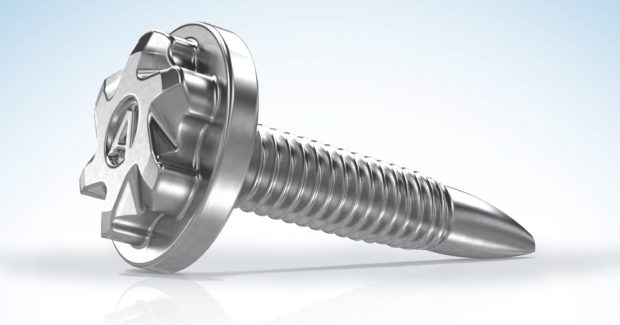Arnold’s New Flow-Hole Forming Screw Extends Application Scope
With the regular Flowform, the maximum limit for joining 1.5 mm thick steel sheet metal was 600 MPa, with Flowform Plus it is 1,000 MPa.
Posted: March 22, 2022
The automotive industry is focusing on weight reduction. Thinner and higher-strength steels or aluminium are increasingly being used, and more and more designs use mixed materials. In this application context, new fasteners must ensure that joints are reliable.
In Flowform Plus, the developers at Arnold changed the diameter to 4 mm compared to the 5 mm diameter of the regular Flowform. At the same time, the geometry of the flowform tip was optimized and the heat treatment process was adapted to ensure that performance is almost equivalent. With Flowform Plus (a further development of the established Flowform flow-hole and thread-forming screw), Arnold Umformtechnik GmbH & Co. KG is responding to customer demand for higher specifications. With the regular Flowform, the maximum limit for joining 1.5 mm thick steel sheet metal was 600 MPa, with Flowform Plus it is now 1,000 MPa. In Flowform Plus, the developers at Arnold have changed the diameter to 4 mm compared to the 5 mm diameter of regular Flowform. Depending on the head and length, the conventional Flowform 5.0 weighs about 4.0 grams, while the new Flowform Plus 4.0 weighs about 3.0 grams. This represents a weight saving of 25 percent. In addition, the geometry of the flowform tip has been optimized and the heat treatment process adapted, resulting in comparably good performance.
Wide range of savings in the classical use cases
Flowform Plus is principally designed for higher-strength steel sheets and thicker sheet combinations. The use of aluminium components also means that joining thicker combinations with multiple layers can be required. In the past, for three-layer joints, this has meant that the top and middle layers had to be pre-drilled. Now, by using Flowform Plus, Arnold Umformtechnik states that, depending on the material being joined, thicker material combinations of up to 7.5 mm can be joined without pre-drilling. The reason for this is the lower material displacement due to the smaller diameter. This results in less gap formation between the sheets. The smaller diameter also leads to less friction. As a result, the tapping torque is lower than with the regular Flowform 5. Since the torque level is lower in this case, the connection can also be tightened with a lower tightening torque. According to Arnold Umformtechnik, the joint strength not quite as good that of Flowform 5, but sufficient for the application.
They also state that the smaller head diameter of Flowform Plus means that the customer’s design layout of the assembly can be optimized. For example, flanges, can be made narrower and thus more weight-optimized. With its lower material penetration, less axial force is required for similar material combinations compared with the regular Flowform. The process workload can thus be reduced. As a result, a smaller robot can be used if necessary. If the same robot is used, there is less load on the screw during the joining process. Another advantage is that users can continue to use their existing equipment for screwing. No major equipment retrofits are needed.














